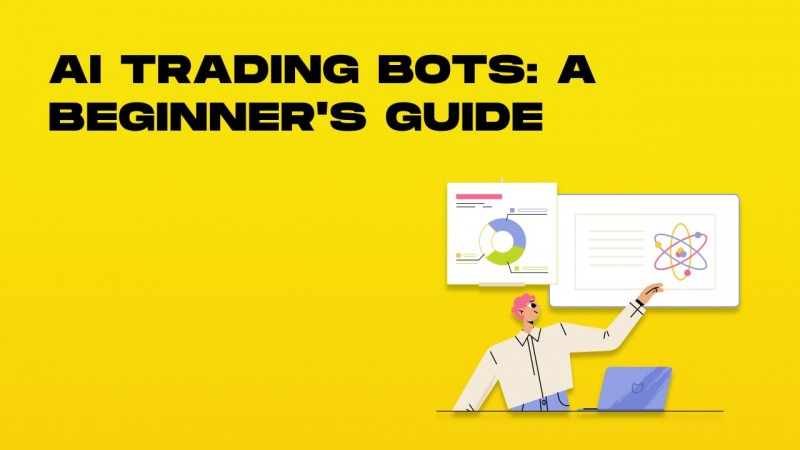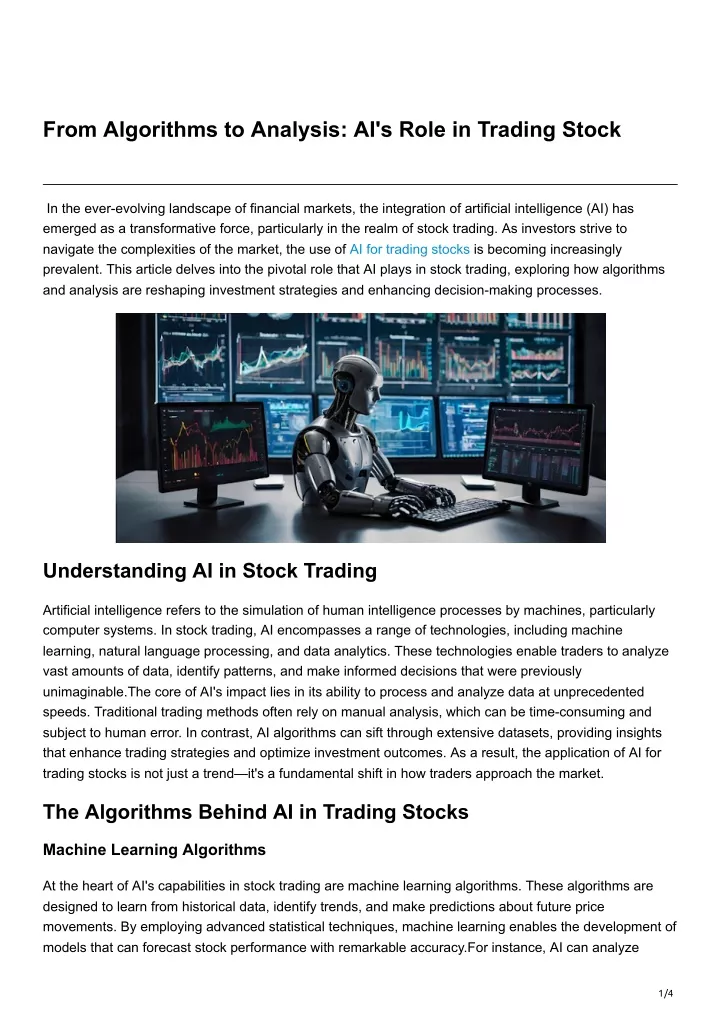Top 10 Tips For Evaluating The Market Coverage Of Ai Stock Predicting/Analyzing Trading Platforms
Market coverage plays a crucial aspect in evaluating an AI software for stock prediction and analysis because it determines the access you have to a broad range of assets and financial markets. If you choose a platform with extensive coverage, you are able to diversify your portfolio and avail of opportunities across the globe. You can also adjust to various trading strategies. Here are 10 suggestions on how you can evaluate the market coverage of platforms.
1. Evaluate Supported Asset Classes
Stocks – Ensure that you have access to major stock exchanges such as NYSE and NASDAQ. Additionally, make sure that your platform offers small-caps as well as mid-caps.
ETFs Find out if the platform allows you to select from a wide range of ETFs. This gives you an array of exposure.
Options and futures. Verify that the platform has derivatives such as options, futures and other instruments that leverage.
Forex and commodities: Find out whether your website offers Forex and commodities, precious metals, and energy commodities.
Cryptocurrencies – Make sure to check whether your platform is compatible with most popular cryptocurrencies, including Bitcoin, Ethereum and altcoins.
2. Check the Coverage Area
Global markets: The platform should be able to cover the major global markets, including North America and Europe, Asia-Pacific and emerging markets.
Regional focus: Check if the platform is focused on specific regions or market segments that are in line with your preferences for trading.
Local exchanges: Determine that your platform supports regional and local exchanges relevant to your business or your plan.
3. Assessment Real-time vs. delayed data
Real-time Market Data: The platform needs to offer real-time data on trading to allow for rapid decision-making.
Data that is delayed – Determine if delayed data is free or is available at a lower cost. This might be enough for investors who are looking to invest for the long term.
Data latency. Check if the platform minimizes the time it takes to process real-time feeds, especially in the case of high-frequency trading.
4. Review the Historical Data available
Depth of Historical Data Check that the platform provides extensive historical data that can be used for backtesting, analysis and testing (e.g. 10plus years).
Granularity: Verify whether the historical data contains intraday granularity, as well as daily, weekly and monthly.
Corporate actions: Determine whether historical data reflects dividends, stock splits as well as other corporate actions.
5. Review for market depth and order information
Level 2 data: Check that the platform contains Level 2 information for price discovery and better execution.
Find out if there is a real-time bidding system and spreads of asking. This will guarantee that the pricing is correct.
Volume data: Make sure that the platform provides comprehensive volume data to study market liquidity.
6. Review the coverage to determine Indices and Sectors
Major indices : Ensure that you are using a platform that includes the most important indexes. (e.g. S&P 500, NASDAQ 100, FTSE 100 ) This is important for benchmarking and index-based strategies.
Industry-specific data If you’re looking to conduct a more specific analysis, check if there are data available for certain sectors.
Customized indexes. Verify that the platform supports creating and keeping track of custom indices that meet your criteria.
7. Evaluation of the integration with News and Sentiment data
News feeds – Ensure that the platform is integrating real-time news feeds for market-moving stories from reputable (e.g. Bloomberg or Reuters) sources.
Sentiment analysis: See if the platform includes tools for analyzing sentiment based on news media, social media or other sources of data.
Event-driven strategy: Check that the platform supports event driven trading strategies (e.g. announcements of earnings economic reports).
8. Verify Multi-Market Trading Capabilities
Cross-market trade: Check that the platform supports trading across asset and market categories using a common interface.
Conversion of currencies Check to see whether you can convert currencies in a way that is automatic for international transactions and if there are multi-currency account options.
Make sure you have support for time zones.
9. Review Alternative Data Sources
Alternative data: For unique insights, verify whether your platform is using other data sources (e.g. satellite imagery, web traffic or credit card transactions).
ESG Data: Check to see whether there is any environmental, social, or governance (ESG data) that are part of the platform for investing socially responsible.
Macroeconomic data: Ensure the platform provides macroeconomic indicators (e.g., GDP, inflation, interest rates) for fundamental analysis.
10. Review Market Feedback and User Reviews. Reputation
Feedback from users: Read user reviews to determine the credibility of the platform as well as market coverage.
Reputation of the industry: Find out whether there are any award-winning experts or awards that recognize the platform’s coverage of the market.
Look for testimonials that demonstrate the platform’s efficiency in specific assets and markets.
Bonus Tips
Trial time: You can use the demo, trial, or free trial to evaluate the coverage of markets and the quality of data.
API access – Determine if the API is able to access information on the market programmatically.
Support for customers: Ensure that the platform is able to assist you with market-related questions or issues with data.
Utilizing these guidelines, it is possible to be able to accurately evaluate the coverage of AI stock prediction/analyzing trading platform. Then, you can select a trading platform that offers you the market and the information you need to make successful trades. You can diversify your portfolio and take advantage of new opportunities by using extensive market coverage. Follow the most popular market ai hints for site recommendations including ai trade, ai investing platform, AI stock trading bot free, ai investment app, AI stock trading, ai investing platform, chart ai trading assistant, ai investing, AI stock trading, AI stock trading app and more.

Top 10 Tips For Assessing The Risk Management Capabilities Of Ai Stock-Predicting/Analyzing Platforms
Risk management is a key aspect of any AI trading platform. It assists in protecting your investment while minimizing the risk of losses. A platform with strong risk management tools can help you navigate turbulent markets and make informed decisions. Here are ten top strategies to help you evaluate the risk management capabilities of these platforms.
1. Review of Take-Profit and Stop-Loss Features
Configurable settings: Ensure that you can set the maximum take-profit and stop-loss levels for certain trades.
Trailing stops: Make sure your platform supports trailing stops, which automatically adjust as the market changes in your favor.
Check if your platform allows you to place stop-loss orders which guarantee closing your trade at the price you have specified, even in unstable markets.
2. Measure Positions Tools
Fixed amount: Check that the platform you are using allows you to set positions in accordance with a set amount.
Percentage: See whether you can set your position sizes in proportion to the amount of your portfolio. This will allow you to control risk more effectively.
Risk-reward ratio: Check to see if it is possible to define the risk-reward percentages for specific strategies or trades.
3. Make sure you check for support for Diversification.
Multi-asset trading. Make sure your platform is compatible with multiple asset classes such as ETFs as well as Forex, Options and Stocks.
Sector allocation: Ensure that the platform includes instruments to monitor the sector’s exposure.
Diversification of geographic risk: Check if the platform permits trading on international markets in order to spread geographical risk.
4. Review the margin and leverage controls
Margin requirements. Be sure to know the requirements for margin prior to trading.
Be sure to check for limits on leverage. You can use this feature to limit your exposure to risk.
Margin calls – Check to see if your service notifies you of margin calls promptly. This will prevent liquidation.
5. Evaluation of Risk Analytics and Reporting
Risk metrics. Be sure that the platform is equipped with the most important risk indicators (e.g. VaR Sharpe Ratio, Drawdown) that are pertinent to the portfolio you are managing.
Evaluation of scenarios: Make sure the platform you are using lets you simulate market scenarios and assess the risk.
Performance reports: See whether the platform provides detailed performance reports that include risk-adjusted return.
6. Check for Real-Time Risk Monitoring
Monitoring of your portfolio: Make sure the platform you use allows you to monitor your portfolio in real-time.
Alerts and notifications – Verify that the platform has sent out alerts in real-time when risks occur (e.g. Margin breaches and triggers for stop-loss orders).
Risk dashboards: Check if the platform offers customizable risk dashboards for an extensive overview of your risk profile.
7. Assess Stress Testing and backtesting
Stress testing: Make sure that the platform you choose permits the testing of your strategies and portfolio under the most extreme conditions of the market.
Backtesting – See the platform you use allows you to backtest strategies with old data. This is an excellent way to assess risk and assess the performance.
Monte Carlo Simulations: Check whether the application uses Monte Carlo simulations in order to model and assess a range possible results.
8. Risk Management Regulations: Assess compliance
Compliance with regulatory requirements: Ensure that the platform adheres to the relevant regulations for risk management (e.g. MiFID II, Reg T, in the U.S.).
Best execution: Check if the platform follows the most efficient execution method, which guarantees that trades are carried out at the best price so as to limit any loss.
Transparency: Find out whether the platform has clear and transparent disclosures of risks.
9. Verify that the parameters are controlled by the user.
Custom risk rules: Ensure that the platform you choose lets you create your own unique risk management guidelines.
Automated risk controls: Verify if the platform can automate the enforcement of risk management rules in accordance with your predefined criteria.
Check whether the platform permits manual overrides to automated risk control.
Reviews of User Feedback and Case Studies
Review by users: Conduct user studies to evaluate the platform’s effectiveness for risk management.
Case studies: Search for case studies or testimonials that showcase the platform’s strengths in the field of risk management.
Forums for community members. Find out if the platform is a thriving user-based community where traders share risk management strategies and advice.
Bonus Tips
Trial period: Make use of a no-cost demo or trial to experience the risk management capabilities of the platform in real-world scenarios.
Customer Support: Verify that the platform is able to provide comprehensive support in the event of any risk management-related questions or issues.
Educational resources: See whether the platform offers instructional resources or tutorials on best practices in risk management.
These suggestions will assist you to evaluate the risk management capabilities of AI analysis and stock prediction platforms. In this way you can select a platform that protects your capital and limits potential losses. Tools for managing risk that are reliable are essential for trading in volatile markets. Take a look at the top ai options trading for more recommendations including how to use ai for stock trading, best ai penny stocks, investing with ai, AI stock predictions, AI stock prediction, ai options trading, how to use ai for copyright trading, free ai tool for stock market india, ai for trading stocks, trading ai tool and more.

